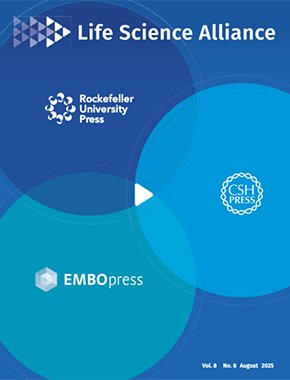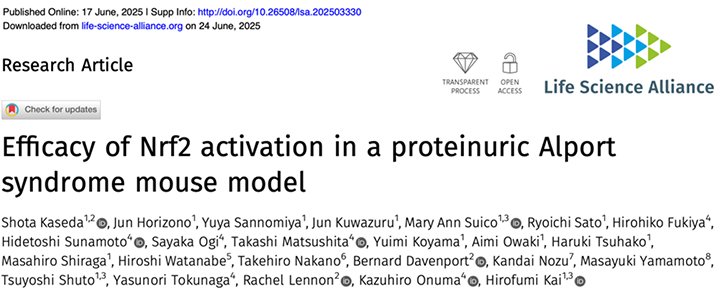News





Licensing Agreement for Novel Nrf2 Activator
2025/07/14 News ReleaseUBE Corporation (President: Yuki Nishida, Head Office: Minato-ku, Tokyo; hereinafter, "UBE") and GALTS Pharma Co., Ltd. (Representative: Hirofumi Kai, Head Office: Kumamoto City, Kumamoto Prefecture; hereinafter "GALTS"), a venture company that originated from Kumamoto University, announced today that they have reached an agreement granting GALTS an exclusive worldwide license for UD-051, a compound whose therapeutic potential was discovered in joint research by UBE and Kumamoto University. UD-051 is a nuclear factor erythroid 2-related factor 2 (Nrf2) and Kelch-like ECH-associated protein 1 (Keap1) protein-protein interaction inhibitor,*¹ expected to be used for the treatment of Alport syndrome*² and kidney disease.
Currently, no effective therapeutic drugs exist for Alport syndrome, with renin-angiotensin (RA) system inhibitors*³ primarily used to manage symptoms. However, many patients progress to end-stage renal failure and require renal replacement therapy. Recently, Nrf2 has gained attention as a new drug discovery target in the development of treatments for kidney disease, as it is a transcription factor that protects cells from oxidative stress and inflammatory responses.
The novel compound UD-051, whose therapeutic potential was identified through joint research between UBE and Kumamoto University, potently activates Nrf2 and has demonstrated significant renoprotective effects in a mouse model of Alport syndrome. Notably, when combined with an RA system inhibitor, it suppressed the progression to renal failure and noticeably extended the survival of Alport syndrome model mice. (These findings are part of the results from the study "Search for a renal pathology ameliorative approach leading to development of a Japan-originated specific and reversible Keap1 inhibitor," with Hirofumi Kai of Kumamoto University serving as the principal investigator and UBE as co-investigator as part of the FY2021-2023 AMED project "Practical Research Project for Kidney disease.")
These research findings were accepted by the international open-access journal Life Science Alliance and published on June 17, 2025. The pharmacological effects of UD-051, as shown by test results (including glomerular filtration rate, oxidized albumin ratio, and pathological findings), are expected to gain international recognition and will be important for future therapeutic development.


UD-051, newly synthesized at UBE's pharmaceutical research laboratory, is small molecular that functions as an Nrf2-Keap1 protein-protein interaction inhibitor. It inhibits the interaction between Nrf2 and its suppressor Keap1 at nanomolar concentrations, activating Nrf2, and shows high oral bioavailability.
Under this agreement, GALTS will obtain exclusive worldwide rights for the future development, manufacturing, and marketing of UD-051.
Research and development teams from Kumamoto University and Kobe University were the only ones nationwide selected for the FY2025 AMED "Practical Research Project for Intractable Diseases" in the "Clinical Trial Preparation for Pharmaceuticals (Pharmaceutical Step 1)" category. GALTS will participate in this project as a research and development partner company for GP-051 (GALTS's development code name for UD-051). Additionally, this pharmaceutical development is supported not only by AMED but also by the Kumamoto Industrial Support Foundation and Kumamoto City's support programs for new products and technologies. As preparations for future clinical trials progress, GALTS--a drug discovery venture that brings together drug discovery experts with extensive experience at major Japanese and foreign pharmaceutical companies, as well as specialists in law, finance, and investment strategy, in addition to academics from Kumamoto University's School of Pharmacy--will leverage its unique strengths and utilize external contract research organizations to achieve efficient and rapid management, advancing toward the implementation of clinical trials for GP-051.
About UBE Corporation
UBE, which focuses on specialty chemicals, considers its pharmaceutical business a core business in the life sciences sector. In drug discovery research, aside from traditional small molecule drugs, the Company is also pursuing the development of high-value drug discovery, such as antibody-drug conjugates (ADCs). In its CDMO business, UBE aims to grow its existing small molecule pharmaceutical operations while also providing means to protect people's lives and health through nucleic acid drugs and other products that leverage manufacturing technologies for new modalities.
About GALTS Pharma Co., Ltd.
GALTS Pharma is a drug discovery venture company founded on August 22, 2023, by Hirofumi Kai, who took early retirement from his position as a professor at Kumamoto University. The name GALTS comes from "Good for All Three Sides" and "Good for Alport Syndrome." Experienced professionals from major Japanese and foreign pharmaceutical companies, as well as specialists in law, finance, and investment strategy, along with faculty members from Kumamoto University's School of Pharmacy, serve as directors and advisors to the company. GALTS will continue to evaluate the pharmacological efficacy, pharmacokinetics, and safety profile of GP-051 and conduct GLP-compliant non-clinical studies with the goal of generating evidence to support its therapeutic potential in humans, in preparation for clinical trials. Due to its mechanism of action, this compound has potential applications for treating general chronic kidney disease and hearing loss, and it is expected to help create a society with zero dialysis, zero kidney transplants, and zero hearing loss. GALTS aims to provide innovative treatment to Alport syndrome patients worldwide as soon as possible and will continue to accelerate its research and development efforts.
- Nrf2-Keap1 Protein-Protein Interaction Inhibitor
Nrf2 is an important transcription factor (a factor that regulates gene expression) that protects cells from oxidative stress and inflammatory responses inside cells. When cells are exposed to oxidative stress or harmful substances, Nrf2 is activated, inducing genes involved in intracellular antioxidants, detoxification enzymes, and cellular repair. This response is a key cellular protective mechanism that prevents cell damage and maintains tissue homeostasis.
Under normal conditions, Nrf2 is kept inactive in the cytoplasm by its suppressor Keap1, which ubiquitinates and degrades Nrf2. However, under oxidative stress or exposure to harmful substances, Keap1 releases Nrf2, allowing it to move into the nucleus and regulate gene expression. Consequently, drugs that prevent Keap1 from binding to Nrf2 can further activate Nrf2, potentially reducing oxidative stress in the kidneys and helping to protect kidney function. Specifically, for Alport syndrome, activating Nrf2 is expected to slow down kidney damage progression and decrease hearing loss, including age-related hearing decline. - Alport Syndrome
Alport syndrome (classified as an intractable disease) is a hereditary, progressive kidney disorder that mainly affects the kidneys, inner ear, and eyes. It is caused by genetic mutations impacting type IV collagen. Key symptoms include progressive kidney dysfunction with hematuria, hearing loss, and visual impairment. Alport syndrome is genetically transmitted and inherited in X-linked, autosomal recessive, or autosomal dominant patterns. It is the second most common hereditary kidney disease in children (birth rate: 1 in 40,000-50,000; population prevalence: 1 in 5,000; estimated number of patients in Japan: several thousand). In severe cases, patients inevitably progress to end-stage renal failure in their late teens or twenties, making it a major cause of early dialysis initiation. Even after kidney transplantation or dialysis, symptoms like hearing loss and blindness reduce the quality of life. Current treatments are symptomatic, using renoprotective drugs (such as RA system inhibitors) and dialysis to slow kidney function decline, but no definitive cure is available. - Renin-Angiotensin (RA) System Inhibitors
RA system inhibitors are drugs that suppress the renin-angiotensin-aldosterone (RAA) system, a hormonal system that regulates blood pressure. They help regulate the balance of water and sodium in the body, playing a key role in maintaining blood pressure. The RAA system begins with renin, which is secreted by the kidneys, and ultimately produces angiotensin II, a potent vasoconstrictor that is involved in the development of hypertension and kidney damage. RA system inhibitors include angiotensin-converting enzyme inhibitors, angiotensin II receptor blockers, and renin inhibitors. These drugs are often used to treat hypertension, heart failure, and chronic kidney disease. Because they have kidney-protective effects, they are specifically used to slow the progression of conditions such as Alport syndrome.
Contact
Public Relations Group, Corporate Communication Department, UBE Corporation
Tel: +81-3-5419-6110; E-mail: contact_pr@ube.com
Hirofumi Kai, Ph.D., CEO, GALTS Pharma Co., Ltd.
E-mail: contact@galtspharma.com; URL: https://galtspharma.com